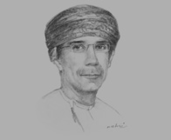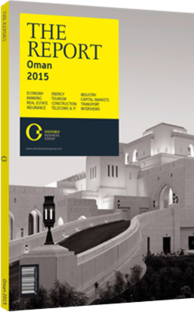Said bin Hamdoon Al Harthy, Undersecretary for Ports and Maritime Affairs, Ministry of Transport and Communications: Interview

Interview: Said bin Hamdoon Al Harthy
How is the ministry addressing capacity and operating challenges in the recent port changeover?
SAID BIN HAMDOON AL HARTHY: There are still many challenges associated with the changeover from Port Sultan Qaboos in Muscat to Sohar Port, but the long-term benefits will outweigh the short-term costs. For example, transport costs from Sohar to Muscat should be the same or less in the long run, since more major liners will call directly to Port Sohar. The goal here is to boost efficiencies and lower costs, so every decision is based around this.
The ministry started looking into the logistics of the port changeover very early on, and case studies have confirmed that the decisions made will be good for the long term. We knew that shifting container and cargo traffic from one port to another would not be easy, but the scale of the challenge was not felt until the move was executed. The main issues in Sohar have been technical delays and clearance issues, which we are addressing. The port, the ministry and the shipping companies are working closely together to find fast and viable solutions, and things are improving by the day.
The priority is ship turnaround. Our ports cannot afford delays or bottlenecks on this front. We are also working to improve container handling and clearance procedures. Customs and clearance are very important to global shippers and freight forwarders, who are accustomed to world-class service and quick turnaround, so this is what we aim to deliver. In the short term, we are aiming to reduce the Customs and clearance time from 100 minutes to 60 by the end of 2014.
What steps are Omani ports taking to capitalise on changing global logistics patterns?
AL HARTHY: Our ports are very capable and have both the infrastructure and technology to compete globally. Both Oman’s location and the strategic placement of its ports are paramount. To maximise these two advantages, we are building inland infrastructure links between the two ports, between Oman’s cities and ports, and between Oman and the rest of the GCC.
Here we are excelling. New road projects are continually being tendered and completed. The new airports near the ports enhance the country’s profile and increase the range of the goods available, not to mention the railway, which is looking positive and will complete the logistics picture for shippers. We will always aim to use more IT in logistics and supply chains to reduce paperwork and speed up the movement of goods. Once the physical infrastructure is complete and running efficiently, the country can leverage its economic power through enhanced trade agreements.
The ministry is seeking to boost the competitiveness of Oman’s ports regionally, while also reducing internal competition between them. We have set up the ports strategically to cater to specific markets. Salalah, well established as a trans-shipment centre, is moving to capitalise on the cargo that will serve its free zone and industrial area. Sohar, with its mix of general cargo and industry, is well placed to serve neighbouring countries. Last, Duqm is being set up to capitalise on dry dock services and cater to heavy industry.
How do free zones enhance the appeal of the ports?
AL HARTHY: A good example of this is the Sohar Port and Freezone, where the plans for each element are progressing in parallel. This synergy enables smooth interaction between cargo movement and warehousing, while also increasing the ease of doing business. Salalah’s port and free zone also have a good connection, but we feel it might be better if they were under one umbrella, since it is easier for international companies to do business with one entity than with many. The rules and regulations would be standardised, companies could use the port and the free zone to expand their activities, and more small businesses could set up operations to support the larger industries. As this cycle increases, the port would expand its global footprint and become more competitive. We can see this strategy in action at Duqm, where everything is being built together with the needs of all parties in mind.
You have reached the limit of premium articles you can view for free.
Choose from the options below to purchase print or digital editions of our Reports. You can also purchase a website subscription giving you unlimited access to all of our Reports online for 12 months.
If you have already purchased this Report or have a website subscription, please login to continue.

